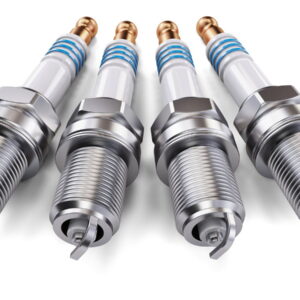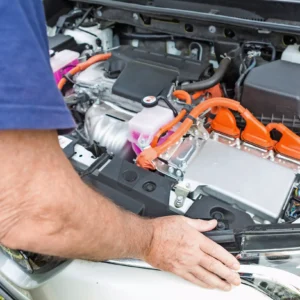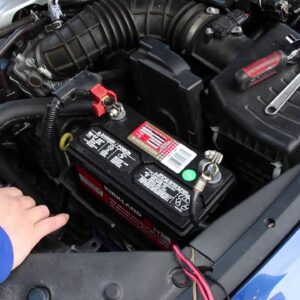Introduction
As winter’s chill sets in, our vehicles face a gauntlet of challenges that go beyond slippery roads and frosty windshields. From frozen fluids to weakened batteries, cold weather puts a strain on every component of your car. While many of us dutifully perform routine checks—like swapping to winter tires or topping off antifreeze—there are lesser-known strategies that can make the difference between smooth winter driving and costly breakdowns. In this post, we’re peeling back the curtain on Winter Car Care Secrets Auto Mechanics & Insurance Agents Don’t Want You to Know, offering insider insights that will help you save money, maximize safety, and avoid unexpected headaches on icy roads.
Below, you’ll find a deep dive into tips and comparisons drawn from the experiences of seasoned mechanics and insurance professionals. We’ll compare DIY methods vs. professional services, explore the hidden motives behind certain recommendations, and show you how to navigate this complex landscape with confidence. Read on to become the winter car-care guru among your friends—and avoid the pitfalls that mechanics and insurers might rather you overlook.
Winter Car Care Secrets
When it comes to preparing vehicles for cold weather, there’s plenty of conventional wisdom: switch to winter tires, check your battery, and keep windshield washer fluid topped up. However, mechanics often have little tricks up their sleeves—insights gleaned from years in the shop—that they might not broadcast widely because those “secrets” drive additional service revenue. Likewise, insurance agents may highlight certain precautions not just for safety, but also to steer you toward policies that boost their bottom line.
In this section, we’ll uncover some of those lesser-known strategies—tips that can help you win at winter car care without lining someone else’s pockets.
1. Preemptive Fluid Flushes: More Than Just Antifreeze
Most drivers know to check the antifreeze-to-water ratio in their radiators before frost hits. But did you know that engine oil viscosity and transmission fluid condition can be equally critical? According to State Farm, “oil tends to thicken as temperatures drop, which means your engine has to work harder to pump it” (State Farm). Rather than simply topping off fluids, mechanics often recommend a complete fluid flush before the coldest months, which helps remove sediment and moisture that can cause wear or even freezing in cold extremes .
Insurance agents may emphasize antifreeze because policies often include roadside assistance coverage for overheating or breakdowns. However, ignoring transmission fluid can lead to slipping gear changes and tripped safety sensors—issues that are outside “collision” coverage, resulting in out-of-pocket expenses. By scheduling a full fluid exchange (engine oil, transmission fluid, and differential fluid), you not only improve reliability but also reduce the odds of a claim that would raise your premiums next year.
2. Battery Testing vs. “Guaranteed” Battery Replacement
We’ve all heard the warning: “Cold weather kills batteries.” It’s true—battery capacity can drop by up to 50% in freezing temperatures. Mechanics know this well, but they also see a lot of unnecessary battery replacements. According to a Mercury Insurance advisory, “cold temperatures can reduce your battery’s power, but a simple load test can determine if it truly needs replacement” (newsroom.mercuryinsurance.com).
In many cases, a thorough cleaning of battery terminals and tightening of connectors solves starting issues—without shelling out for a new battery. Mechanics want to sell replacements because that’s how they make money; insurance agents are fine with it too, since they can upsell “battery replacement coverage” riders that cost upwards of $100 per year (Automoblog). The secret? Insist on a professional load test before agreeing to a swap, and if your battery still tests strong (typically above 12.4 volts under load at 32°F), simply clean and secure the terminals.
3. Hidden Dangers of Idling vs. Controlled Warm-Up
A lot of folks think that letting the car idle for 10–15 minutes warms it up and is good for engine longevity. In reality, modern engines perform better when driven gently after a short warm-up. Extended idling in winter:
- Burns extra fuel, raising your bills
- Coats engine internals with unburned fuel, diluting oil life
- Creates condensation in the exhaust system, leading to rust
Auto experts advise a 30-second spin around the block to get oil circulating before taking on highway speeds. Industry veteran Bill Nalu explained in The Sun that “warming up a car for only 30 seconds rather than idling for long periods… saves fuel and avoids engine wear” (The US Sun).
Insurance agents usually encourage idling explanations—because roadside assistance calls for dead batteries (due to short trips) often translate into covered claims. By showing that you understand the controlled warm-up method, you not only minimize engine stress but also reduce the frequency of minor claims related to battery failures or exhaust issues.
Auto Mechanics Advice for Winter
Mechanics see the inside of your car’s engine more often than you do. Their perspective on winterization often highlights how to prolong component life and prevent breakdowns. However, some of their best-kept secrets don’t make it into the standard “winter maintenance” list. Below, we dive into insider tips mechanics rely on, and we’ll compare those to mainstream recommendations.
Common Winter Maintenance Tasks Vs. Pro Mechanic Insights
| Maintenance Task | Conventional Advice | Pro Mechanic Insight |
|---|---|---|
| Oil Change | Switch to winter-grade oil (e.g., 5W-30 to 0W-30). | Also replace oil filter and consider synthetic blends that retain viscosity at -20°F. (State Farm) |
| Battery Check | Test battery strength; replace if below 12.4 volts. | Clean and secure terminals; perform load test under cold-starter conditions before replacement. (newsroom.mercuryinsurance.com, The US Sun) |
| Coolant/Antifreeze Check | Ensure 50/50 coolant-to-water ratio. | Drain old coolant to remove sediment and check radiator cap pressure rating for cold-weather specs. (State Farm) |
| Tire Inspection | Check tread depth and swap to winter tires. | Inspect tires for sidewall cracks (cold can worsen them); rotate tires before winter season; adjust pressure based on real-time temps. (State Farm, tomsautomotive.com) |
| Brake System Service | Test brake fluid; inspect pads and rotors. | Flush old brake fluid which can absorb moisture and freeze, then use DOT 4 or DOT 5.1 fluid for better low-temp performance. (Real Simple) |
Table Explanation: The left column lists standard winter maintenance tasks as you’d see in most “winterize your ride” articles. The right column reveals the additional steps that PRO mechanics perform to ensure those tasks actually deliver maximum benefit. Notice that many of these insights focus on removing old fluids (oil, coolant, brake fluid) to avoid condensation and sludge issues—details often glossed over in generic checklists.
Insurance Agent Tips for Winter Car Care
Insurance agents have a vested interest in minimizing claims—or upselling policies. They’ll tell you to do certain things to stay safe, but they’ll also highlight certain “coverage gaps” to steer you toward additional riders. Here’s what they want you to know, and what they might conveniently leave out.
H2: Insurance Agent Advice Vs. Behind-the-Scenes Motives
- Buy Comprehensive Roadside Assistance
- Agent’s Pitch: “Winter breakdowns can leave you stranded in sub-zero conditions. Let us cover towing, jump-starts, and even fuel delivery if you run out.” (Stock Titan)
- Hidden Motive: While roadside assistance is useful, basic AAA membership costs $70–$100 a year and covers most scenarios. Bundling with your auto policy often costs $50–$80, but pushes premiums higher on renewal.
- Purchase “Mechanical Breakdown Insurance” (MBI)
- Agent’s Pitch: “MBI ensures any sudden failure—like a frozen transmission or starter motor—will be covered up to $3,000 per incident.” (Automoblog)
- Hidden Motive: Claims on MBI can be heavily scrutinized, with strict mileage and vehicle-age requirements. Many claims end up denied, and you’ll still pay deductibles. Also, paying out-of-pocket for minor repairs (e.g., $200 alternator fix) may be cheaper in the long run than a $300–$500 annual premium.
- Adjust Deductibles for Winter Coverage
- Agent’s Pitch: “Raising your deductible from $250 to $500 saves you hundreds annually—but for winter claims, consider a lower deductible for ‘Glass Coverage’ to protect against cracked windshields from flying debris.”
- Hidden Motive: Glass coverage deductibles are typically more expensive and cover only limited scenarios (e.g., large chip or crack). In many states, you can add windshield glass repair services for $20–$30/year, which might be more cost-effective than lowering a standard deductible.
- Package Your Policies
- Agent’s Pitch: “Bundle your home and auto policies to get up to 15% off. In winter, if your home’s heating pipes freeze and burst, comprehensive auto claims could offset deductibles.” (Stock Titan, Real Simple)
- Hidden Motive: Bundling can save money only if you maintain a clean driving record. One claim on auto could wipe out home-policy discounts, leaving you paying more overall.
By understanding the motivations behind these suggestions, you can filter advice to focus on high-value, low-cost actions, rather than paying for layered coverage you may never use. Always compare independent quotes (e.g., Mercury Insurance or State Farm) before upgrading add-ons.
Key Comparisons: DIY vs. Professional Services
When preparing for winter, you’ll inevitably face the choice between tackling tasks yourself or paying a mechanic. Below, we compare DIY convenience to professional expertise, breaking down cost, time, safety, and risk factors. This comparison will help you decide which tasks are worth doing at home, and which you should delegate to a trusted shop.
DIY Winter Maintenance Pros & Cons
- Pros:
- Cost Savings: Replacing windshield wipers, swapping to winter tires, and checking fluid levels can be done yourself for a fraction of shop labor rates (often $100–$200 per hour). (Real Simple)
- Immediate Control: If roads are icy, you can install winter tires or adjust tire pressure right away, without waiting for a service appointment. (State Farm)
- Satisfaction & Skill Building: Learning how to jump-start a battery or inspect brake pads enhances your confidence and mechanical aptitude.
- Cons:
- Wrong Fluid Choices: Without professional guidance, DIYers may grab the wrong viscosity oil or coolant, leading to engine wear or freezing issues. (Real Simple, State Farm)
- Tool & Space Requirements: Performing tasks like fluid flushes or brake inspections requires tools (e.g., torque wrench, fluid evacuation pump) and a safe working environment—often lacking in standard driveways. (myqualitytuneup.com)
- Warranty & Insurance Implications: Some extended warranties or insurance claims may be voided if you can’t prove professional service—meaning a $20 part cost could turn into a $200 claim denial. (Automoblog)
Professional Service Advantages & Hidden Costs
- Advantages:
- Comprehensive Diagnostics: Pros can perform load tests, scan for electronic codes (e.g., ABS sensor faults aggravated by ice), and spot issues (like cracking rubber hoses) that non-experts miss. (The US Sun)
- Guaranteed Quality: Most reputable shops offer warranties on labor (usually 12 months/12,000 miles), giving peace of mind against post-service failures.
- Proper Disposal & Recycling: Professionals responsibly handle hazardous fluids (old coolant, brake fluid), which is both eco-friendly and often required by local regulations.
- Hidden Costs:
- Diagnostic Fees: Many shops charge $100–$150 just for the initial scan. If you decline service after diagnosis, you still pay that fee.
- Upselling & Markup: Mechanics often mark up parts (filters, belts) by 30–50% over retail. You may end up paying $50 for a part that costs $25 online. (tomsautomotive.com, 10K Wraps)
- Scheduled Delays: During peak winter prep season (October–December), shops can be booked 1–2 weeks out, forcing drivers to risk icy road exposure. (State Farm)
Tip: If you decide to DIY, invest in a reputable service manual (e.g., Haynes or Chilton) for your specific vehicle make, and purchase essential tools gradually—prioritizing safety equipment like jack stands and jack ramps.
Insider Insights on Specific Winter Care Areas
Mechanics and insurers each focus on certain parts of your vehicle in winter. We’ll now delve into some critical areas—Battery & Electrical Systems, Tires & Traction, Brakes & Suspension, and Emergency Preparedness—with focused tips that bridge the gap between DIY and professional advice.
Battery & Electrical Systems
- Myth Busted: A Brand-New Battery Is Always Better
A fresh battery doesn’t guarantee trouble-free starts if the car’s charging system (alternator, voltage regulator) is worn. According to Mercury Insurance, “cold temperatures can reduce your battery’s power, but a simple load test can determine if it truly needs replacement” (newsroom.mercuryinsurance.com). Always test the alternator output: if it’s above 13.5 volts at idle, the charging system is healthy. - Parasitic Drains and Key Fobs
Modern vehicles often draw a small “parasitic” current from the battery to power alarm systems and electronic modules. In winter, when you take shorter trips, this drain can deplete the battery overnight. Mechanics recommend unplugging aftermarket alarms or non-essential USB chargers to reduce load. If you have a high-end key fob with proximity entry, replace its internal battery annually before winter to avoid a dead fob that prevents engine start—even when your car’s battery is fine. (myqualitytuneup.com, The US Sun) - DIY Battery Tender vs. Professional Installation
A battery tender (trickle charger) is a worthwhile $30–$50 investment for overnight charging if your car sits unused in frigid temps. However, mechanics caution that cheap tenders can overcharge older batteries, leading to grid corrosion. Opt for a “smart” tender with automatic shut-off. If you’re unsure, have a pro install a temperature-compensated charging system that adjusts the charge rate based on ambient temperature—ideal for vehicles stored in unheated garages. (The US Sun, newsroom.mercuryinsurance.com)
Tires & Traction
- Not All Winter Tires Are Created Equal
Many drivers assume “winter” equals “snow.” But there are three categories of cold-weather tires:- All-Season Tires: Decent for mild winter regions (temps above 45°F).
- All-Weather Tires: M+S (Mud + Snow) rated, perform better at 32–45°F but not optimized for heavy snow.
- True Winter Tires: Marked with a snowflake symbol, designed for sub-20°F temps and deep snow, with specialized silica-infused rubber.
Tom’s Auto Seattle recommends that “if you live in a region with severe winter conditions, winter tires are essential for safety” (tomsautomotive.com). Many mechanics push for winter tires early in October to avoid shortages, which artificially inflates demand—and pricing—late November through January. Insurance agents sometimes offer slight discounts (5–10%) on premiums if you switch to winter tires because they track lower accident rates in those regions.
- DIY Tire Pressure Checks vs. TPMS Alerts
Cold air contracts, reducing tire pressure by ~1 PSI for every 10°F drop. Mechanics often find customers relying solely on their Tire Pressure Monitoring Systems (TPMS), which only alert once a tire is 25% below optimal PSI. By then, uneven wear and damaged belt cords can already be in play. Instead, purchase a reliable digital tire gauge for $15–$20 and check pressures weekly. If your TPMS light comes on, schedule an immediate shop visit: driving on under-inflated tires in winter can lead to a blowout on pothole-ridden roads—a claim often denied if you’ve ignored the TPMS light for too long. (State Farm, The US Sun)
Brakes & Suspension
- Brake Fluid Contamination: The Silent Threat
Brake fluid is hygroscopic—it absorbs moisture over time. In winter, if moisture content exceeds 3%, it can freeze (solidify) in the lines, leading to spongy pedal or total failure. While most drivers check brake pads, mechanics recommend a mid-season brake fluid flush (especially if it’s been more than two years since the last flush). According to Real Simple, “flushing old brake fluid… uses DOT 4 or DOT 5.1 fluid for better low-temp performance” (Real Simple). Insurers often won’t cover a winter accident if you can’t prove proper brake maintenance, so keep detailed service records. - Suspension Checks Beyond the Obvious
Cold temperatures can accelerate rubber bushing deterioration. Worn bushings lead to reduced steering precision—critical on ice. Mechanics will jack up the vehicle to inspect control arm bushings, sway bar links, and tie rod ends, looking for cracks that might not be visible until stressed by a pothole. Many drivers only think about shocks and struts, but bushing condition is equally important. If you discover worn bushings, replacing them before deep freeze can cost $150 per side vs. $300–$400 in early spring after more damage sets in. (myqualitytuneup.com, tomsautomotive.com)
Emergency Preparedness & Winter Kits
- Insurance Agent vs. Mechanic on Winter Kits
Insurance brochures often stress extensive winter kits—including items like road flares, chemical ice scrapers, and extra coolant—to justify coverage add-ons for towing and roadside service. Mercury Insurance recommends “creating a winter emergency kit containing flashlights, jumper cables, blankets, and basic supplies” (Stock Titan). While that’s sound advice, mechanics stress strategic minimalism:- Sturdy ice scraper and snow brush
- Folding boot shovel (fits under seat)
- Compact jumper cables (protect against electrolyte splashes)
- High-visibility vest and small bag of salt or cat litter for traction
Beyond that, mechanics argue, “overstuffing your trunk increases weight and reduces fuel efficiency.” So unless you regularly drive in blizzard zones, a streamlined kit can be equally effective—and less likely to clutter your space.
- DIY vs. Pro on Emergency Tires
Spare tires in many modern cars are “space-saver spares” (T125/80D15) that only allow speeds up to 50 mph and distances up to 70 miles. Mechanics recommend carrying a full-size, “all-season” spare if you live in winter-heavy regions—even if it means renting a rooftop cargo box for long road trips. Insurance agents won’t cover completed trips if your pull-off tire is too small to handle icy roads safely. Having a professional install and rotate that full-size spare into your tire rotation plan can cost $20–$30 per visit, but significantly lowers the risk of being stranded. (tomsautomotive.com, The US Sun)
Implications & Insights: Why These Secrets Matter
Understanding the underlying dynamics between economics, safety, and policy coverage can illuminate why mechanics and insurance agents emphasize certain recommendations over others.
Economic Impacts of Winter Neglect
- Increased Repair Costs
- A neglected battery or serpentine belt in December can lead to a dead engine or snapped belt in January, often accompanied by towing charges (which can run $100–$150) and emergency labor rates (up to $200/hour). (The US Sun, newsroom.mercuryinsurance.com)
- A small coolant leak that crept up in autumn can freeze in January, causing a cracked engine block—repairs that easily hit $1,500.
- Insurance Premium Inflation
- Filing a claim for a fender-bender caused by icy roads can increase premiums by 20–30% on renewal—costing you $200–$400 extra per year for the next three years, depending on your record. (Automoblog, Stock Titan)
- Deferring a $100 brake fluid flush can lead to an accident that costs $3,000 to repair, of which the insurer only covers $2,500—leaving you with a $500 deductible. Filing that claim hits your record, raising premiums substantially.
- Resale Value & Depreciation
- Vehicles with documented professional winter maintenance (oil changes, brake flushes, winter tires) tend to fetch 5–7% higher resale value in colder regions. According to Tom’s Auto Seattle, “prospective buyers often ask for service records to confirm that the car was properly winterized” (tomsautomotive.com). Conversely, a vehicle with neglected rubber components may exhibit early wear, lowering resale by several hundred dollars.
Safety Implications & Long-Term Reliability
- Electronic Systems Vulnerable in Winter
- Modern vehicles come with Advanced Driver Assistance Systems (ADAS). If your windshield wiper arms freeze and crack the glass, recalibrating lane-keeping sensors can cost $300–$400—costs not always covered if you skip a proper winter glass protection plan. (The US Sun, Real Simple)
- Corroded brake lines can lead to sudden brake failure; mechanics often detect “incipient corrosion” only when they strip the wheels off.
- Tire Grip vs. “All-Season” Trade-Offs
- Mechanics note that all-season tires can harden at 32°F, losing up to 20% of their grip. An unplanned switch to true winter tires can slash braking distance by up to 30% on snowy roads. State Farm reports that “winter tire-equipped vehicles experience 40% fewer loss-of-control crashes” (State Farm).
- However, many drivers cling to all-seasons because they “haven’t felt enough snow”—a false sense of security that mechanics warn against. If you drive just once on black ice with all-seasons, you’ll understand why investing $600–$1,000 in a good set of winter tires is a safety imperative, not a luxury.
- Insurance Gaps for Unapproved Modifications
- Many drivers install aftermarket remote starters to pre-warm their cars, only to find out that if that device malfunctions and causes a fire, insurers may deny a claim because it wasn’t professionally installed or the device didn’t meet manufacturer specs. Always check policy fine print and use approved installers that provide proper documentation. (myqualitytuneup.com, The US Sun)
Conclusion
Winter car care is about more than just swapping tires and adding antifreeze. By understanding the secrets mechanics don’t widely broadcast—like strategic fluid flushes, accurate load testing, and high-grade winter tires—you can proactively prevent breakdowns and save significant repair costs. On the insurance side, recognizing the subtle nudges toward add-on coverage and knowing when to say “no thanks” can keep premiums in check while still ensuring you’re protected against realistic winter hazards.
Most importantly, the real win is combining DIY vigilance (weekly tire-pressure checks, basic battery maintenance, a streamlined winter kit) with strategic professional interventions (mid-season fluid flushes, advanced diagnostics, bushing inspections). This balanced approach helps you avoid the pitfalls of both under-preparation (leading to breakdowns and claims) and over-reliance on upsells (leading to inflated premiums and unnecessary service fees).
Stay safe, stay prepared, and let these insider insights guide you through the frosty months. By integrating these winter car care secrets into your routine, you’ll not only keep your vehicle running smoothly but also avoid the surprise bills that mechanics and insurers would rather you didn’t see coming.
Call to Action
Ready to take control of your winter car care? Start by downloading our Free Winter Maintenance Checklist, which includes space for recording service dates, fluid-change intervals, and tire-rotation schedules. Don’t let hidden fees or surprise breakdowns catch you off guard—subscribe to our newsletter for monthly tips, DIY tutorials, and special offers on winter tires and battery tenders. Share this article with fellow drivers, and let’s make this winter the safest (and most cost-effective) one yet!






